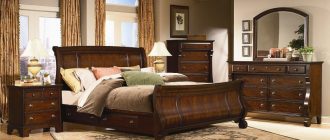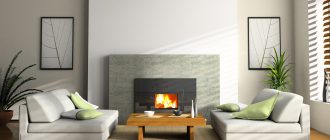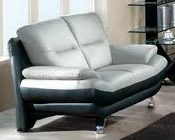The Swedish people were little addicted to luxury when southerly countries were indulging in the elaborate furniture productions of the Renaissance. Not until the seventeenth century did furniture designing in this country adopt any particular degree of cosmopolitanism. This advance took place gradually as a result of stimulation from Holland, and to a lesser degree from France. English influence followed, in models based on Stuart designs which were continued during the opening decades of the eighteenth century.
A greater development of skills required in the production of seat furniture and cabinetwork, and in the cutting of decorative patterns on mirror plates, occurred after this time. Advances in these fields increased the appreciation and distribution of Swedish furniture between 1740 and the close of the century.
The majority of foreign craftsmen settled in Stockholm during the eighteenth century, and the capital city became noticeably influenced by French designs. From 1700 to 1740 limited numbers of Swedish master cabinetmakers were accepted into a guild established there. Increased membership during the following decades reached a peak between 1760 and 1770. The chair-makers of the city were organized as a separate guild, which was formed later than that of the cabinetmakers.
Work of these Stockholm craftsmen at first bore their manual signatures, a custom which was continued even after the introduction of pontil marks and labels, although later initials often served in place of full signatures. Guild marks were sometimes used in addition, while pieces which were to be exported required still another stamp.
Training acquired by Stockholm cabinetmakers in Paris was concentrated on the skills necessary to carry out the elaborate contours favored between 1740 and 1770, and also those required in laying of surface veneers. It is apparent that no concerted effort was made toward copying French Rococo or Classic designs with any degree of accuracy.
Rococo projects included bureaus, bureau-form commodes, cabinets and medailliers. In bombe, and in other serpentine structures, additional emphasis was created by pronounced curves, either where a sharp arris was employed, or the typically native, slowly rounded and involute pilaster.
In later Classic schemes daybeds and bedsteads were added to the existing upholstered forms which displayed indications of French styling. More numerous types of veneered tables and bureaus also appeared, including the bureau plat, bureau a cylindre and secretaire a abattant. Larger bureaus and cabinets frequently indicated German influence, which remained less evident in other pieces.
Gilded bronze mounts were cast in richly styled handles, escutcheons, panel surrounds and other appliques. The appearance of identical designs, on pieces executed by various masters, indicates a common local source of supply.
Although influence from England extended to Stockholm, where some craftsmen worked in both the French and English styles, this impetus was more pronounced on the west coast. Here Goteborg was affected to a greatest extent by the English school, although the potential market of this area, based on population, totaled only a quarter of that in Stockholm.
Features associated with the popularity of walnut furniture in England appeared in Sweden during her Baroque period. It was not until the introduction of Chippendale and later Georgian styles, however, that Swedish designs showed an appreciable regard for the English school, yet English design was confined mainly to seat frames, tables and small writing pieces.
Swedish exports of furniture present an interesting study, as published by Marshall Lagerquist, Rokokomobler, Nordiska Museet, Stockholm, 1949. French-style seat furniture was exported from Stockholm, in pairs and complete suites, along with tables and desks of various types, commodes and cabinets. Numerous wall mirrors, girandoles and crystal lighting fixtures sent out from this city indicate a great development of the glass industry there. These Stockholm exports went chiefly to Swedish Pomerania, Copenhagen, St. Petersburg, Niga, Revel, Danzig, Lubeck and Hamburg.
Furniture from Goteborg was sent to northern Denmark, Norway, Canton in China, Swedish Pomerania and other sections in North Germany. In the British Isles this furniture was received in Newcastle, Hull, London, the Isle of Man and numerous Scottish towns; also at Londonderry, Belfast, Coleraine, Lame and Enniskillen in Ireland. Shipments to Spain and Portugal included deliveries made at the port of Bilbao.





